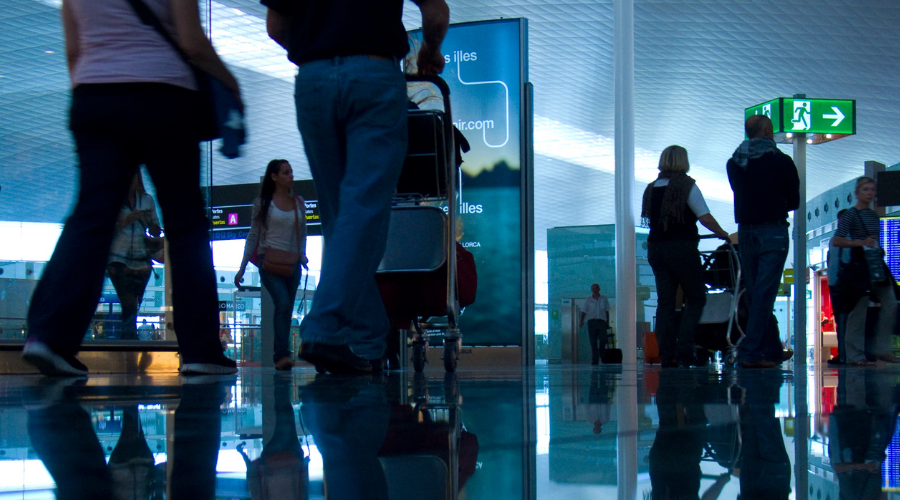Combatting Terrorist Threats with Intelligent Video Surveillance

Terrorist threats are an unfortunate reality in our world. And while we have collectively learned to adapt our security approach, advancements in technology have greatly improved security professionals’ ability to thwart threats. Take video analytics, they are an essential tool in helping security professionals not only respond to, but be proactive and prepare for future and potential terrorist threats.
We have all become accustomed to the “see something, say something” culture. And while we all do our best to be security-minded and alert authorities should we feel the need, there are situations that are simply missed by the human eye. Vehicles parked near areas with high pedestrian traffic might get overlooked because people are moving through the area too quickly, individuals wearing unseasonably bulky clothes could be ignored because people are just “minding their own business,” and individuals attempting to enter restricted areas could be missed because people nearby are busy looking down at their phones. Video surveillance can identify security situations and potential threats that people cannot. Security professionals can, and should, use video analytics to assist in their efforts in reviewing and responding to current terrorist threats as well as researching and preparing for future ones.
Accelerate Investigations
As opposed to traditional methods, video analytics can rapidly accelerate investigations by reviewing hours of video in just minutes. With the ability to quickly search and filter objects of interests through a wide range of categories, like men, women, children, vehicles, face and license plate recognition, color, size, dwell time and more, authorities can quickly hone in on areas or persons of interest. For example, say an abandoned truck is reported outside an airport terminal. That situation is obviously cause for concern and something that should be investigated with urgency. With the use of a license plate recognition filter, airport security can quickly identify where else that vehicle traveled on airport property and therefore determine when the driver left. Once they have a rough description of the person they are looking for, security can quickly review and search footage throughout the airport to locate them. By using video analytics, airport security can act swiftly to confirm whether or not the vehicle is a threat.
Attain Situational Awareness
In addition to accelerating investigations, video analytics have the ability to help organizations increase their situational awareness and be proactive about their security response. Video analytic software can be configured to provide real-time, rule-based alerts based on a variety of factors, such as face recognition (when a person of interest enters the frame), or line crossing (when someone or something enters frame from a certain direction). Rules like these can be layered so that security can be notified at very specific points, like a man in a white shirt and black hat enters frame from the west entrance.
Video surveillance technology like this is particularly helpful when managing large-scale entertainment events like outdoor music festivals, which present their own unique security challenges and are targets for terrorist threats. Event security can use video surveillance with real-time alerts to quickly identify suspicious activity and therefore react and respond accordingly. For instance, a rule-based alert could be configured to notify security when a person is dwelling in a specified area for too long, or when someone enters a restricted area, like backstage or the technical booth where producers are running the show. Perhaps there is a known specific threat on the event from an identified person. Security at large-scale music festivals can be difficult because thousands of people attend; asking frontline security to identify this person as they enter the venue could be like finding a needle in a haystack. With scalable face recognition watchlist management and real-time alerts, security and law enforcement can be rapidly notified if and when that threat attempts to enter the venue and therefore react appropriately.
Derive Operational Intelligence
Video analytics is incredibly powerful when security professionals know what they are looking for. But what about when they don’t? Utilizing operational intelligence resources within a video surveillance system can help security professionals understand trends and patterns in occupancy and traffic flow to more easily identify unexpected behavior or activity. Surveillance platforms can extract and aggregate metadata down to men, women, children, vehicles, speed, direction and dwell time, all of which can provide a wealth of insight from a security perspective. If a city uses video surveillance to monitor the perimeter of City Hall, they could find through studying metadata that traffic typically moves at a slower pace around the building as it is set back from a main road. Under that assumption, a car careening through the area around City Hall would be notable and give security a reason to look into the vehicle and the driver. Why are they speeding? Are they trying to make a quick exit? Security can use their video surveillance system to rapidly review footage and look for clues.
Or maybe a popular historical landmark or museum uses video surveillance to analyze the foot traffic around their premises. In doing so, they identify a general pattern that visitors move in at a steady pace. Someone running in the opposite direction from the usual directional patterns would be atypical and cause security to investigate and respond. In that situation, video analysis could also be used to quickly review hours of footage to identify any unusual packages or objects that could be potential threats while simultaneously investigating the person of interest.